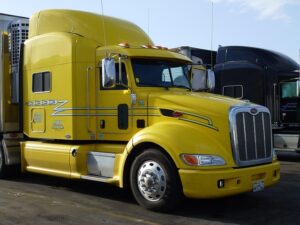Register Car California: Step-by-Step VIN Verification Guide
Looking to register your car in California? Navigating the process can be straightforward with the right guidance. This article breaks down the essential steps, from understanding state requirements f…….

Looking to register your car in California? Navigating the process can be straightforward with the right guidance. This article breaks down the essential steps, from understanding state requirements for car registration to submitting your application at the Department of Motor Vehicles (DMV). Key aspects include gathering necessary documents for VIN verification and performing a Vehicle Identification Number (VIN) check, ensuring a smooth registration experience.
- Understand California Car Registration Requirements
- Gather Necessary Documents for VIN Verification
- Perform Vehicle Identification Number (VIN) Check
- Choose an Appropriate Registration Method
- Submit Application and Pay Fees to DMV
Understand California Car Registration Requirements

Before registering your car in California, it’s crucial to understand the state’s specific requirements. One vital step is ensuring accurate and up-to-date vehicle identification number (VIN) verification. This process confirms the authenticity of your car’s details, including its make, model, year, and other critical specifications. In California, this typically involves a comprehensive VIN inspection to ensure the vehicle matches the records on file.
A key aspect of this process is conducting a VIN verification through an approved channel, often facilitated by the California Department of Motor Vehicles (DMV). For added convenience, many services offer mobile VIN inspections or verification, allowing you to complete this necessary step efficiently from the comfort of your home or location of choice. This modern approach streamlines the registration process, ensuring compliance with California’s stringent car registration standards.
Gather Necessary Documents for VIN Verification

Before registering your car in California, you’ll need to gather several key documents for a successful VIN verification process. This crucial step ensures that your vehicle meets all safety and legal standards. Among the essential documents required is the Certificate of Title (or ‘title’ for short), which you can obtain from the previous owner or the DMV if it’s a new car. Additionally, you’ll need a current registration certificate, proof of insurance, and a valid driver’s license.
For convenience, many individuals opt for a mobile vin verifier or conduct a vin inspection themselves to collect this information. The Vehicle Identification Number (VIN) is a unique code that can be found on the vehicle’s chassis and is essential for identification purposes during the verification process. Having these documents ready will streamline the registration procedure and help avoid any potential delays.
Perform Vehicle Identification Number (VIN) Check

Before you begin the registration process, it’s crucial to perform a Vehicle Identification Number (VIN) check. This step is essential for ensuring that the vehicle you intend to register is legitimate and has not been reported as stolen or had its identity tampered with. A VIN verification helps in cross-referencing critical data about the car with reputable databases, giving you and the California Department of Motor Vehicles (DMV) peace of mind.
You can conduct a VIN inspection using a mobile vin verifier for convenience. These services allow you to check the vehicle’s history right from the comfort of your home or even while you’re at a DMV office. Alternatively, many auto parts stores and service centers offer basic VIN checks as well. Having this information upfront will streamline the registration process and help avoid any potential delays or issues.
Choose an Appropriate Registration Method

When registering your car in California, understanding the different registration methods available is key to a smooth process. One crucial aspect to consider early on is whether to opt for traditional in-person verification or leverage modern alternatives like mobile VIN verification. The latter involves a convenient and often quicker process where a mobile vin inspector performs a VIN inspection right at your location.
This method is especially appealing for those with busy schedules or limited mobility, as it eliminates the need to visit a DMV office. Moreover, many mobile vin verifiers offer same-day service, ensuring you can have your car’s registration taken care of promptly. In terms of accuracy and reliability, these services are just as valid as traditional VIN verification, providing an efficient way to meet California’s registration requirements.
Submit Application and Pay Fees to DMV

To officially register your car in California, the next step after preparing all necessary documents is to submit an application and pay the required fees to the Department of Motor Vehicles (DMV). This process involves completing an Application for Title and Registration form, which you can obtain from the DMV website or any local field office. Ensure that all information is accurate and up-to-date, including your personal details, vehicle identification number (VIN), and the vehicle’s make, model, and year.
Along with your application, you’ll need to provide proof of identity, insurance coverage, and payment for the registration fees. The DMV offers various payment methods, and it’s essential to ensure that you pay the correct amount based on your vehicle’s classification. After submitting your application and paying the fees, you can track the status of your car’s registration online or through a mobile app provided by the DMV, allowing for convenience and peace of mind with features like mobile VIN inspection and verification.
Registering a car in California involves understanding state requirements, gathering essential documents for VIN verification, performing a vehicle identification number (VIN) check, selecting an appropriate registration method, and submitting applications with associated fees to the DMV. By diligently navigating these steps, you can ensure your vehicle’s legal status, facilitating smooth driving experiences within the Golden State. Remember, accurate VIN verification is key to meeting California’s car registration requirements.







